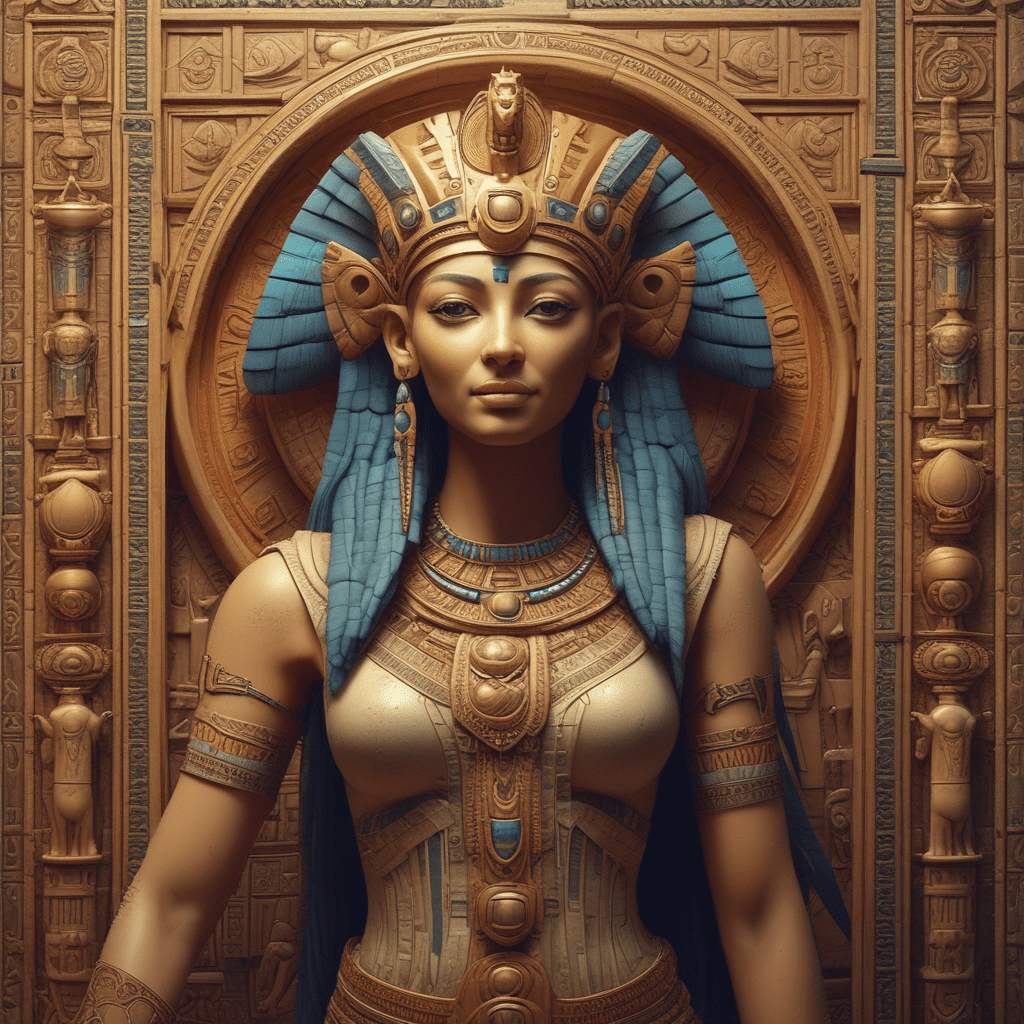The Myth of the Goddess Hathor in Ancient Egypt
In ancient Egyptian mythology, Hathor was a revered goddess associated with love, beauty, joy, motherhood, and music. Her presence was widespread in the ancient Egyptian pantheon, and she was often depicted as a cow goddess, symbolizing fertility and nurturing. Let’s delve into the intriguing myth surrounding the goddess Hathor.
Who was Hathor?
Hathor, also known as the “Mistress of Heaven,” was one of the most important deities in ancient Egypt. She was believed to protect women, assist in childbirth, and oversee the afterlife. Hathor was often depicted with horns on her head, adorned with a sun disk, symbolizing her role as a solar deity.
Myth of Hathor
One of the prominent myths concerning Hathor involves the “Eye of Ra.” According to the legend, Ra, the sun god, became angry with humanity due to their disobedience. To punish them, he released his “Eye,” a lioness goddess who brought destruction. However, Ra soon regretted his decision and sent Hathor in the form of Sekhmet to prevent further devastation. Hathor, as Sekhmet, initially went on a rampage but later transformed back to her benevolent self, restoring balance and mercy.
Legacy and Worship
The worship of Hathor was widespread in ancient Egypt, with many temples dedicated to her. She was celebrated in festivals such as the “Hathor papyrus,” where music, dance, and revelry filled the streets in her honor. Priests and priestesses served in her temples, carrying out rituals to honor her role in sustaining life and ensuring fertility in both the natural and divine realms.
Final Thoughts
The myth of the goddess Hathor offers fascinating insights into the rich tapestry of ancient Egyptian beliefs and spirituality. Her multifaceted nature as a deity symbolizing love, beauty, and protection continues to intrigue scholars and enthusiasts alike. Exploring the stories and symbols associated with Hathor provides a glimpse into the complexities of ancient Egyptian culture and the profound significance of their mythological beliefs.
FAQs About the Myth of the Goddess Hathor in Ancient Egypt
Who was the Goddess Hathor in Ancient Egypt?
In Ancient Egyptian mythology, Hathor was a revered goddess associated with love, motherhood, music, and joy. She was often depicted as a cow goddess or as a woman with cow ears wearing a sun disk on her head.
What was Hathor’s role in Egyptian mythology?
Hathor played a significant role as a protective and nurturing deity. She was also linked to the afterlife, often welcoming the deceased into the underworld. Hathor was believed to bring happiness, fertility, and abundance to the lives of the ancient Egyptians.
How was Hathor worshipped in Ancient Egypt?
Hathor was a widely worshipped goddess, with temples dedicated to her throughout Egypt. Festivals honoring her were held, where music, dance, and offerings were made to appease her. Many Egyptians sought her blessings for joy, love, and protection.
What symbols were associated with Hathor?
Hathor was symbolized by the cow, the sistrum (a musical instrument), and the ankh (symbol of life). The sacred symbol of the eye of Horus was also connected to her, representing protection and healing.





